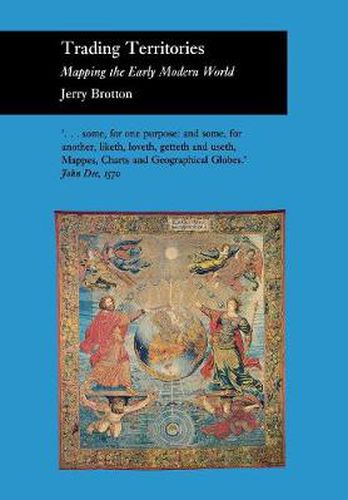Readings Newsletter
Become a Readings Member to make your shopping experience even easier.
Sign in or sign up for free!
You’re not far away from qualifying for FREE standard shipping within Australia
You’ve qualified for FREE standard shipping within Australia
The cart is loading…






In this illustrated text, the author documents the dramatic changes in the nature of geographical representation which took place during the 16th century, explaining how much they convey about the transformation of European culture at the end of the early modern era. He examines the age’s fascination with maps, charts and globes as both texts and artefacts which provided their owners with a promise of gain, be it intellectual, political or financial. From the Middle Ages through most of the 16th century, Brotton argues, mapmakers deliberately exploited the partial, often conflicting accounts of geographically distant territories to create imaginary worlds. As long as the lands remained inaccessible, these maps and globes were politically compelling. They bolstered the authority of the imperial patrons who employed the geographers and integrated their creations into ever more grandiose rhetorics of expansion. As the century progressed, however, geographers increasingly owed allegiance to the administrators of vast joint-stock companies that sought to exploit faraway lands and required the systematic mapping of commercially strategic territories. By the beginning of the 17th century, maps had begun to serve instead as scientific guides, defining objectively valid images of the world.
$9.00 standard shipping within Australia
FREE standard shipping within Australia for orders over $100.00
Express & International shipping calculated at checkout
In this illustrated text, the author documents the dramatic changes in the nature of geographical representation which took place during the 16th century, explaining how much they convey about the transformation of European culture at the end of the early modern era. He examines the age’s fascination with maps, charts and globes as both texts and artefacts which provided their owners with a promise of gain, be it intellectual, political or financial. From the Middle Ages through most of the 16th century, Brotton argues, mapmakers deliberately exploited the partial, often conflicting accounts of geographically distant territories to create imaginary worlds. As long as the lands remained inaccessible, these maps and globes were politically compelling. They bolstered the authority of the imperial patrons who employed the geographers and integrated their creations into ever more grandiose rhetorics of expansion. As the century progressed, however, geographers increasingly owed allegiance to the administrators of vast joint-stock companies that sought to exploit faraway lands and required the systematic mapping of commercially strategic territories. By the beginning of the 17th century, maps had begun to serve instead as scientific guides, defining objectively valid images of the world.